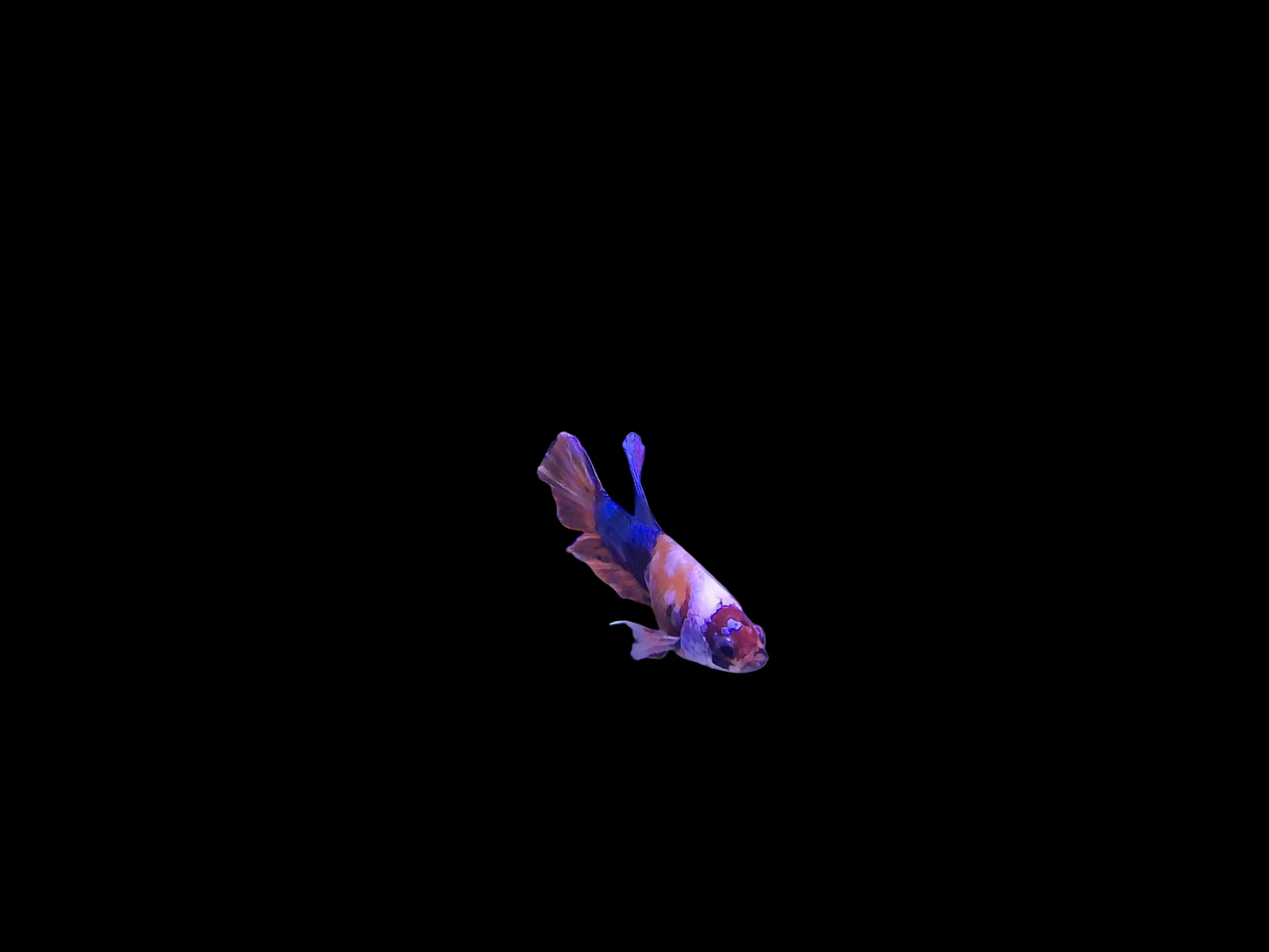Male Plakat Candy Betta (Betta splendens) – Sweet Colors, Bold Personality
Male Plakat Candy Betta (Betta splendens) – Sweet Colors, Bold Personality
Out of stock
Couldn't load pickup availability
🍬 Male Plakat Candy Betta (Betta splendens) – Sweet Colors, Bold Personality
The Male Plakat Candy Betta is a dazzling Betta splendens variety known for its vibrant candy-like mix of pinks, reds, blues, and whites that swirl across its body and fins. Every Candy Betta is unique — a living art piece bursting with color and character.
With short, athletic Plakat fins, the Candy Betta combines strength and energy with eye-catching beauty. Perfect for aquarists who love vivid color and playful behavior in a compact tank setup.
🌟 Key Features
- 🍬 Multi-Color “Candy” Pattern: A brilliant blend of red, blue, pink, and white tones
- 💪 Plakat Fin Type: Short fins for durability, agility, and power
- 🌿 Ideal for Nano Aquariums: Thrives in 3–10 gallon tanks
- 🧠 Smart & Interactive: Recognizes its keeper and reacts to movement
- 💧 Hardy & Beginner-Friendly: Adaptable and easy to care for
- ✨ Each One Unique: Every Candy Betta displays a different color mix
⚙️ Care Guide
- Scientific Name: Betta splendens
- Common Name: Candy Betta (Plakat)
- Adult Size: 2.5–3 inches
- Tank Size: Minimum 3 gallons (heated and filtered recommended)
- Water Temperature: 76–82°F
- pH: 6.5–7.5
- Diet: Carnivore – betta pellets, bloodworms, daphnia, and brine shrimp
- Behavior: Solitary; males should not be housed together
- Tank Mates: Peaceful snails or shrimp (avoid fin-nippers or aggressive fish)
❓ FAQ
Q: What makes the Candy Betta special?
A: Its vivid blend of multiple colors resembles candy — bright, bold, and ever-changing as it matures.
Q: Are Candy Bettas easy to keep?
A: Yes! They’re hardy, interactive, and great for both beginner and experienced aquarists.
Q: Can Candy Bettas live with others?
A: Males should be housed solo, but they do well with small snails or shrimp.



